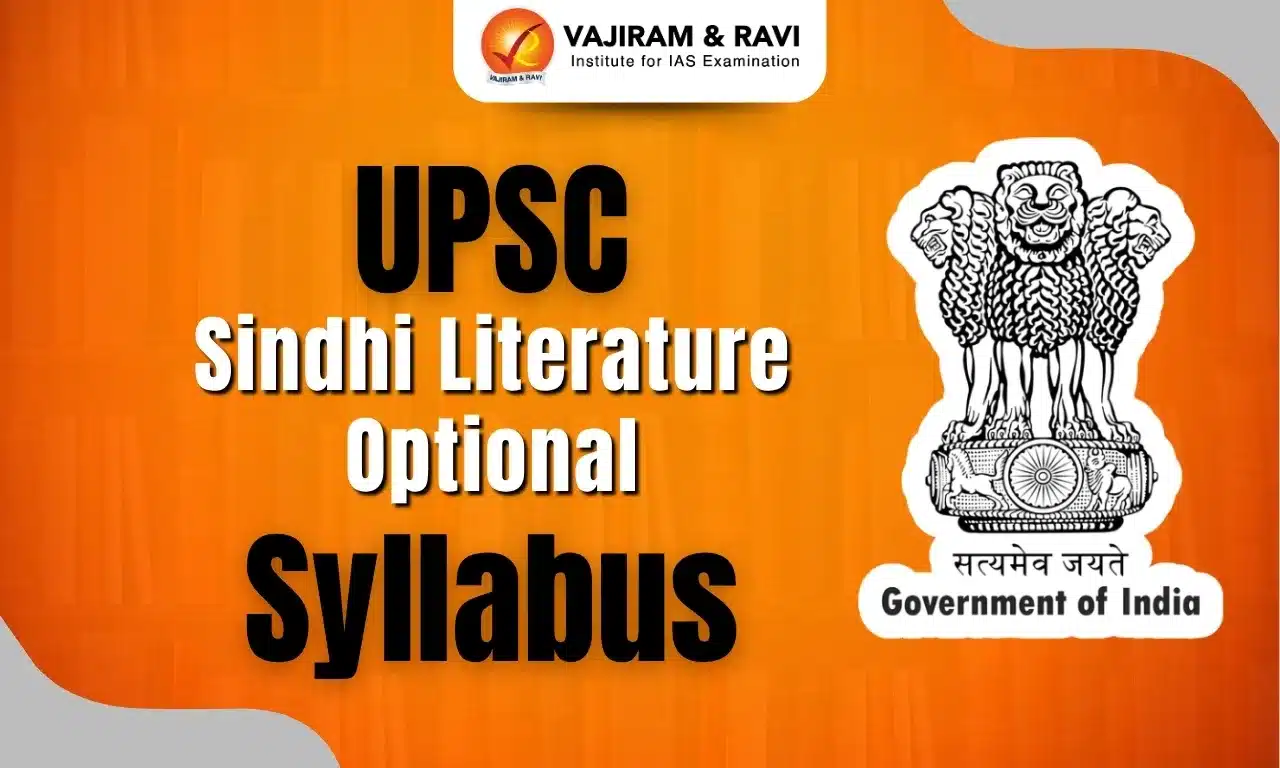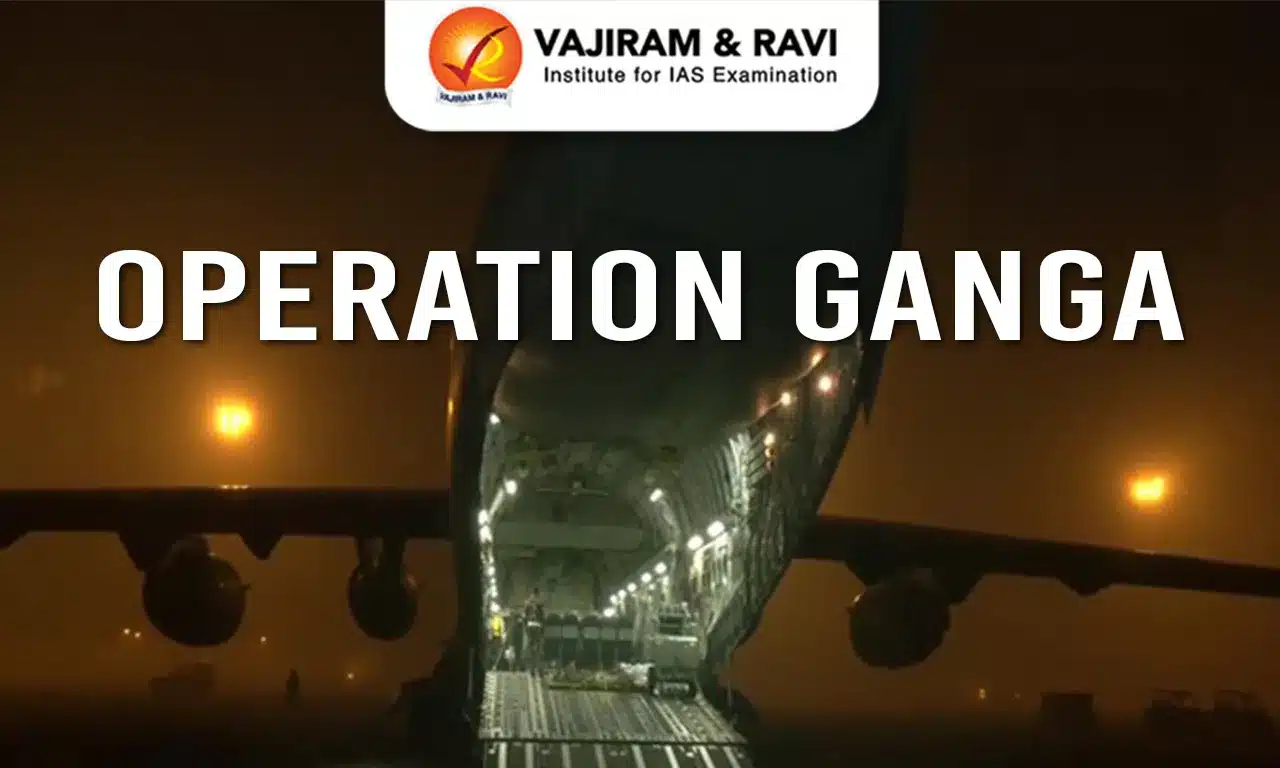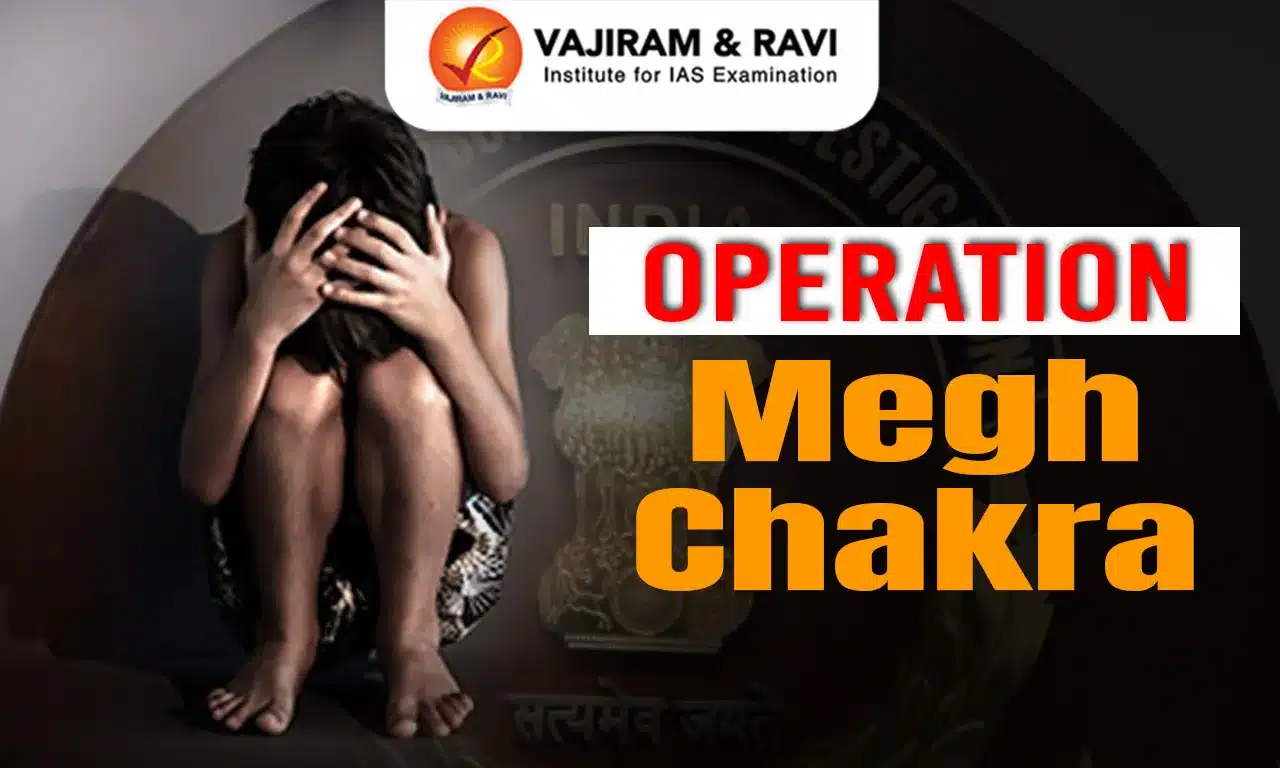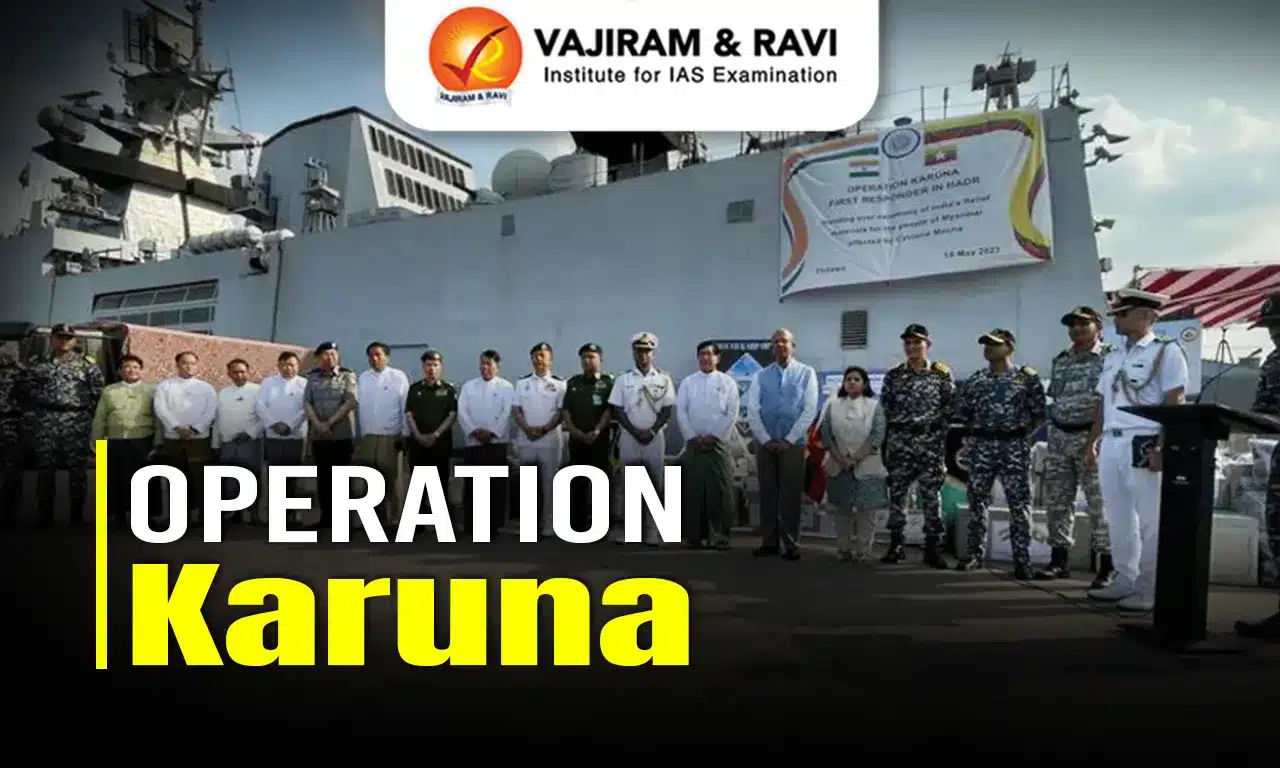The UPSC Sindhi Literature Optional Syllabus 2026 is prepared to evaluate a candidate’s deep understanding and analytical ability in the Sindhi language and literature. It includes both classical and modern works to provide a holistic view of Sindhi literary evolution. This optional subject is ideal for aspirants with a strong foundation in Sindhi and its rich literary traditions.
The UPSC Sindhi Literature Optional Syllabus 2026 is structured into two papers, each carrying 250 marks, making a total of 500 marks in the Mains exam. Paper 1 includes history, language development, and classical literature, while Paper 2 focuses on modern literature, literary criticism, and prose.
UPSC Sindhi Literature Optional Syllabus 2026 Overview
The UPSC Sindhi Literature Optional Syllabus 2026 is comprehensive and inclusive, covering every major literary period. From ancient and medieval poetry to modern prose and critical essays, the syllabus enables aspirants to explore the cultural and philosophical depth of Sindhi literature. The paper is divided into two parts, Paper 1 and Paper 2, each of 250 marks.
| UPSC Sindhi Literature Optional Syllabus 2026 Overview | ||
| Mains Papers | Subject | Marks |
|
Paper VI |
Sindhi Literature Optional Paper 1 |
250 |
|
Paper VII |
Sindhi Literature Optional Paper 2 |
250 |
|
TOTAL |
500 |
|
|
Time Duration |
3 hours |
|
UPSC Sindhi Literature Optional Syllabus 2026 for Paper 1
UPSC Sindhi Literature Optional Syllabus 2026 for Paper 1 focuses on the linguistic development and classical literary heritage of the language. Candidates must study the evolution of Sindhi, its dialects, phonetics, and writing scripts, especially post-partition transformations.
Section B covers the chronological development of literature from early medieval times to the post-independence era. It includes folk literature, Sufi poetry, religious texts, and historical narratives that reflect the ethos of Sindhi culture.
| Sindhi Literature UPSC Optional Syllabus for Paper 1 | |
| Section | Topics of Sindhi UPSC Syllabus |
|
Section-A |
Origin and evolution of Sindhi language—views of different scholars. |
|
Significant linguistic features of the Sindhi language, including those pertaining to its phonology, morphology, and syntax. |
|
|
Major dialects of the Sindhi language. |
|
|
Sindhi vocabulary—stages of its growth, including those in the pre-partition and post-partition periods. |
|
|
Historical study of various Writing Systems (Scripts) of Sindhi. |
|
|
Changes in the structure of the Sindhi language in India, after partition, due to the influence of other languages and social conditions. |
|
| Section-B | |
|
Sindhi literature through the ages in the context of socio-cultural conditions in the respective periods |
Early medieval literature up to 1350 A.D. including folk literature. |
|
Late medieval period from 1350 A.D. to 1850 A.D. |
|
|
Renaissance period from 1850 A.D. to 1947 A.D. |
|
|
Modern period from 1947 and onwards. |
|
|
Literary genres in Modern Sindhi literature and experiments in poetry, drama, novel, short story, essay, literary criticism, biography, autobiography, memoirs, and travelogues. |
|
UPSC Sindhi Literature Optional Syllabus 2026 for Paper 2
Paper 2 is all about the analysis of modern Sindhi literature, including poetry, drama, fiction, and literary criticism. The poetry section features prominent poets such as Shah Abdul Latif Bhittai, Sachal Sarmast, and Narayan Shyam. Candidates must also cover one-act plays, full-length dramas, short stories, and novels that reflect modern themes and socio-political changes.
The prose and criticism segment includes selected essays, autobiographies, and biographical works that offer insights into Sindhi literary criticism. Translation literature is also a key component, showcasing the cross-cultural evolution of Sindhi writings.
| UPSC Sindhi Literature Optional Syllabus 2026 for Paper 2 | |
| Section | Topics of Sindhi UPSC Syllabus |
| Section-A | |
|
Poetry |
"Shah Jo Choond Shair": ed. H.I. Sadarangani, Published by Sahitya Akademi (First 100 pages). |
|
"Sachal Jo Choond Kalam": ed. Kalyan B. Advani, Published by Sahitya Akademi (Kafis only). |
|
|
"Sami-a-ja Choond Sloka": ed. B.H. Nagrani, Published by Sahitya Akademi (First 100 pages). |
|
|
"Shair-e-Bewas": by Kishinchand Bewas (“Saamoondi Sipoon” portion only). |
|
|
"Roshan Chhanvro": Narayan Shyam. |
|
|
"Virhange Khapoi je Sindhi Shair jee Choond": ed. H.I. Sadarangani, published by Sahitya Akademi. |
|
|
Drama |
"Behtareen Sindhi Natak" (One-act Plays): Edited by M. Kamal, Published by Gujarat Sindhi Academy. |
|
"Kako Kaloomal" (Full-length Play): by Madan Jumani. |
|
| Section-B | |
|
Prose and Criticism |
‘Pakheeara Valar Khan Vicharya' (Novel): by Gobind Malhi. |
|
‘Sat Deenhan’ (Novel): by Krishin Khatwani. |
|
|
‘Choond Sindhi Kahaniyon’ (Short Stories) Vol. III: Edited by Prem Prakash, published by Sahitya Akademi. |
|
|
‘Bandhan’ (Short Stories): Sundari Uttamchandani. |
|
|
‘Behtareen Sindhi Mazmoon’ (Essays): Edited by Hiro Thakur, published by Gujarat Sindhi Akademi. |
|
|
‘Sindhi Tanqeed’ (Criticism): Edited by Harish Vaswani, Published by Sahitya Akademi. |
|
|
‘Mumhinjee Hayati-a-ja Sona Ropa varqa’ (Autobiography): by Popati Hiranandani. |
|
|
‘Dr. Choithram Gidwani’ (Biography): by Vishnu Sharma. |
|
UPSC Sindhi Literature Optional Booklist
To prepare effectively, aspirants should refer to UPSC Sindhi Literature Optional Booklists. Candidates may also consult academic journals and Sahitya Akademi publications for updated perspectives.
- Motilal Jotwani’s History of Sindhi Literature provides a comprehensive account of the evolution of Sindhi literature from ancient to modern times.
- Shah Jo Risalo by Shah Abdul Latif Bhittai is an essential poetic compilation that forms the foundation of classical Sindhi literature.
- Sachal Sarmast’s works offer deep insight into the Sufi traditions and philosophical dimensions of Sindhi poetry.
- Modern Sindhi Literature, compiled by Arjan Hasid, is an important reference for understanding contemporary themes and literary movements.
- Academic journals and critiques from universities and research institutions help candidates gain updated perspectives and analytical depth in Sindhi literary studies.
Last updated on December, 2025
→ Check out the latest UPSC Syllabus 2026 here.
→ Join Vajiram & Ravi’s Interview Guidance Programme for expert help to crack your final UPSC stage.
→ UPSC Mains Result 2025 is now out.
→ UPSC Notification 2026 is scheduled to be released on January 14, 2026.
→ UPSC Calendar 2026 is released on 15th May, 2025.
→ UPSC Prelims 2026 will be conducted on 24th May, 2026 & UPSC Mains 2026 will be conducted on 21st August 2026.
→ The UPSC Selection Process is of 3 stages-Prelims, Mains and Interview.
→ UPSC Result 2024 is released with latest UPSC Marksheet 2024. Check Now!
→ UPSC Toppers List 2024 is released now. Shakti Dubey is UPSC AIR 1 2024 Topper.
→ Also check Best IAS Coaching in Delhi
UPSC Sindhi Literature Optional Syllabus 2026 FAQs
Q1. Is Sindhi Literature a scoring optional in UPSC?+
Q2. Can non-Sindhi speakers opt for this subject?+
Q3. Are translations allowed in the exam?+
Q4. How to approach preparation for Paper 1?+
Q5. Which Paper is more analytical, Paper 1 or Paper 2?+

















